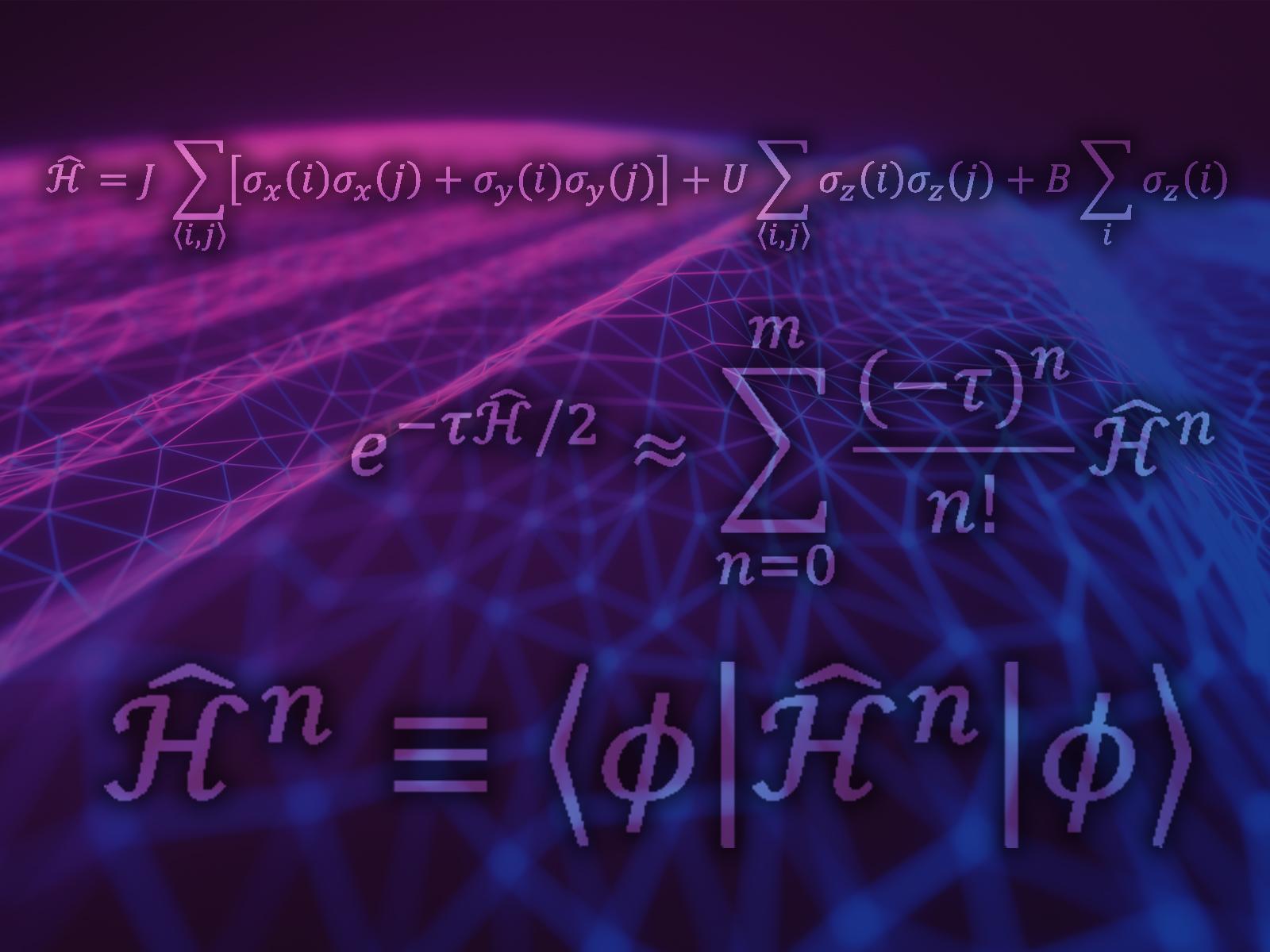Reviewing A Hybrid Computing Approach for Quantum Chemistry
Mixing classical and quantum computing provides more accurate results than current quantum computing

A new tutorial review article guides chemists through a hybrid computing approach developed at Pacific Northwest National Laboratory.
(Illustration by Kelly Machart | Pacific Northwest National Laboratory)
Researchers have set out to model quantum systems with quantum computing; however, accomplishing that goal is complicated. Current quantum computing devices are very “noisy,” with factors like heat and radiation impacting the results. This makes performing accurate calculations challenging. Pacific Northwest National Laboratory (PNNL) researchers are using different tactics, combining quantum and classical computing to obtain more accurate results in a hybrid approach.
The PNNL team, led by computational chemist Bo Peng, recently described their approach in an invited review article in the International Journal of Quantum Chemistry. The review is the culmination of three previous studies published in 2021. The review introduces the hybrid classical-quantum computing approach to non-specialists. It blends a traditional review with real-world examples serving as tutorials.
Specifically, the PNNL research team summarizes existing methods of obtaining an important quantity used to refine calculations of the energy of a system, called Hamiltonian moments, from quantum devices. It also provides an overview of classical methods that use Hamiltonian moments to increase the accuracy of their calculations.
“We threaded the two concepts together to make it help non-specialists understand the connections between the two approaches,” said corresponding author and computational scientist Bo Peng. “This paper provides an entry point to understand and digest the basics of these hybrid calculations.”
The tutorial section of the review describes an example in which the researchers used a quantum computer, IBM-Q, to compute the ground state energy and magnetic properties of a four-site Heisenberg model. The step-by-step example guides readers through solving the four-site Heisenberg model using the hybrid approach. The results demonstrate the excellent agreement between the calculations and the known exact solutions. The tutorial shows how the hybrid approach can mitigate errors in current quantum computers. A recent Editor's Virtual Collection, Quantum Computing for Quantum Chemists, currently highlights this review paper. A previous paper was selected as an editor’s pick, highlighting its importance to the field.
Peng noted that a key member of the research team, Joe Aulicino, was a PNNL intern in the Science Undergraduate Laboratory Internships program. An undergraduate at the University of Chicago, Aulicino spent eight weeks during the summer of 2021 working with Peng. Despite being a novice to quantum computing, he performed all the IBM-Q experiments, helped organize data, and wrote sections of the manuscript.
“I am proud of the amazing progress Joe made in an eight-week summer project,” said Peng. “We even published a small open library along with the paper to allow non-experts and beginners to practice using our approach.”
The team received support from Q-NEXT, one of five Department of Energy National Quantum Information Science Research Centers. The work was also supported by “Embedding QC into Many-body Frameworks for Strongly Correlated Molecular and Materials Systems” project, which is funded by the Department of Energy, Office of Science, Basic Energy Sciences program, the Division of Chemical Sciences, Geosciences, and Biosciences. Aulicino received support from the Science Undergraduate Laboratory Internships program and Trevor Keen was supported by the Office of Science Graduate Student Research program, administered by the Oak Ridge Institute for Science and Education. The authors are Peng, Aulicino, and Trevor Keen.
Published: January 14, 2022